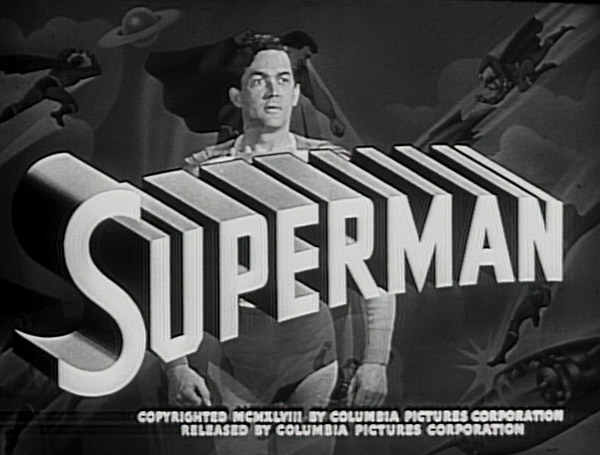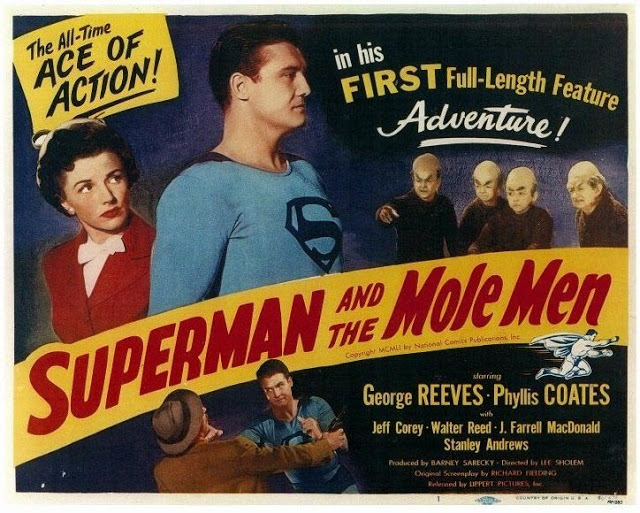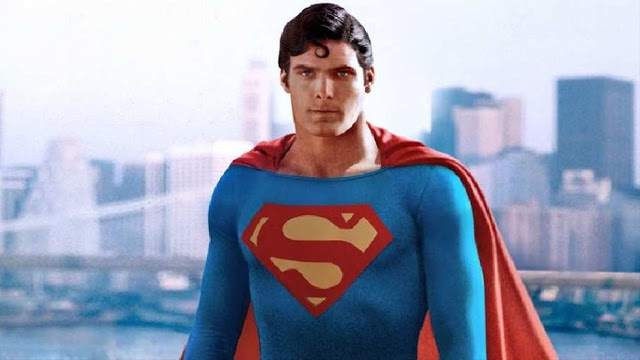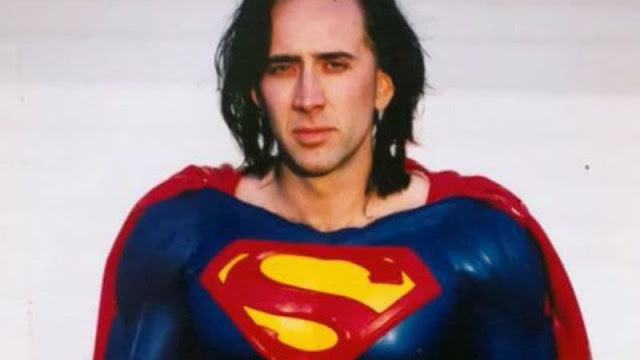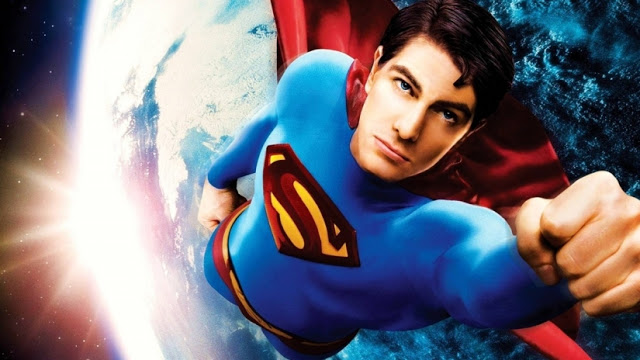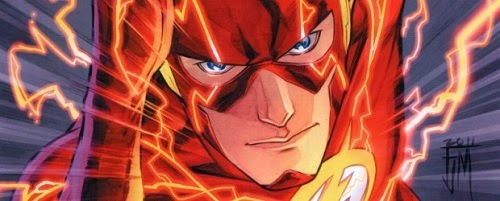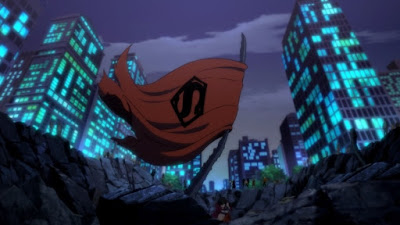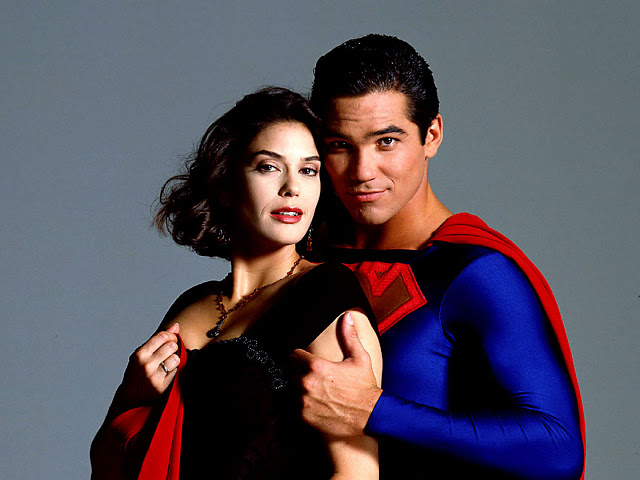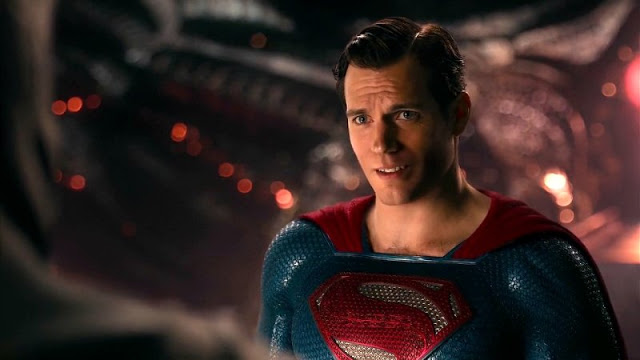
Legacy of the Superman, Part 1: Film
Superman’s first live action film appearance came in 1948 with the release of Columbia’s serial, Superman. Kirk Alyn stars as the Man of Steel in the 15-part serial. The plot has many common elements from Superman’s origin story: Kal-El is sent to Earth by his parents before Krypton’s destruction, he’s raised by the Kents, he discovers his powers, and he is weakened by Kryptonite. The villain is Spider Lady.
Following the success of the first serial, Columbia released a sequel starring Kirk Alyn in 1950, titled Atom Man vs. Superman. This time, Superman fights the Atom Man, aka Lex Luthor, who uses various weapons and gadgets to wreak havoc in Metropolis. Superman is later defeated using Kryptonite. This 15-part serial received less critical acclaim than the first.
Fast-forward to 1951, and we have Superman’s first theatrical live action film. Titled Superman and the Mole Men, the black-and-white movie starred George Reeves as Clark Kent and Phyllis Coates as Lois Lane. In the film, Superman meets a race known as the Mole Men, who have surfaced after an oil drilling affected their home. Superman must intervene and keep the peace between the Mole Men and the citizens of Silsby.
The film holds a special place in history as the first live action theatrical film based on any DC Comics character. George Reeves went on to play Superman in the Adventures of Superman television series. He also reprised the role in other places, such as an episode of I Love Lucy.
From there, the franchise was dead for nearly 20 years. The closest thing we got to a new movie was 1997’s Steel, which completely ignored the character’s Superman connections. However, there were multiple films in development that never saw the light of day…
- Superman V, which would have starred Christopher Reeve in a story that would have depicted Superman’s death and resurrection in Kandor. This was coincidentally written before the Death of Superman comic book.
- Superman Reborn, where Warner Bros. purchased the film rights from the Salkinds in 1993. In the script, Superman dies following his battle with Doomsday, and his life force impregnates Lois Lane. Lois gives birth to a child who goes on to become the resurrected Superman. Kevin Smith came in to rewrite, which leads us to…
- Superman Lives, where Brainiac sends Doomsday to kill Superman and he teams with Lex Luthor. Superman is later resurrected by the Eradicator, and he saves the day. Nicolas Cage would have played Superman, with Tim Burton directing. The film was deep in pre-production in 1997, but due to financial reasons, Warner Bros. dropped it. For more, check out the documentary The Death of “Superman Lives”: What Happened?.
- Batman vs. Superman, which would have pitted the Man of Steel against the Dark Knight. Basically, Lex Luthor would manipulate a recently divorced Clark Kent and a heartbroken Bruce Wayne into a clash of the titans. Wolfgang Petersen was attached to direct, with actors like Christian Bale and Josh Harnett in consideration. However, WB cancelled the project to focus on solo films.
- Superman: Flyby, a script by J.J. Abrams that radically retold Superman’s origin. Here, Kal-El has a corrupt uncle named Kata-Zor and a cousin named Ty-Zor. Kal-El dies and goes to Kryptonian heaven, he is resurrected and defeats Ty-Zor, and Jor-El kills himself in prison. Meanwhile, Lex Luthor is a UFO-obsessed government agent, and an early version had him be a secret Kryptonian. Brett Ratner was attached to direct, while actors such as Jude Law, Asthon Kutcher, and future Superman Henry Cavill were all considered for the lead role. Ratner eventually left and was replaced by McG, who was then replaced by Bryan Singer, who had his own Superman vision in mind….
Warner Bros. finally got a new movie up, up and away with Superman Returns, which was directed by X-Men‘s Bryan Singer. The film, starring Brandon Routh as Kal-El, takes place in the same continuity as Christopher Reeve’s version. While it ignores the third and fourth films, it is a direct sequel to the first two. Returns sees Superman back on Earth, discovering that Lois moved on and now has a son. Meanwhile, Lex Luthor is back at it again.
While critics were mostly positive with Superman Returns, it wasn’t exactly a box office success. With a budget of (at least) $223 million, it only made $390 million worldwide. This surely put a damper on a planned sequel, which would have seen the return of Singer and the cast. There was also interest in having Darkseid be the villain. The film’s lackluster results and Singer’s commitments elsewhere led to the franchise going back to the drawing board.
In 2008, Warner Bros. decided to pursue a full-on Superman reboot. Following pitches from comic book writers (including an 8-hour trilogy from Mark Millar and Matthew Vaughn), the studio picked up a pitch by producer Christopher Nolan and writer David S. Goyer. That pitch went on to become Zack Snyder’s Man of Steel, a new take on Superman’s origin. Starring Henry Cavill, the film was a darker and more contemporary vision of Kal-El’s beginnings. Kal discovers who he is, he meets Lois, and he must defend Earth from General Zod.
Man of Steel was definitely a polarizing film, receiving mixed reception amongst fans and critics. Creative decisions like Superman killing Zod and depicting mass destruction in Metropolis certainly rubbed some people the wrong way, and it sparked countless debates. However, Man of Steel was a financial success; its $668 million is the biggest in Superman movie history. This led to WB quickly greenlighting a sequel.
That sequel became Batman v Superman: Dawn of Justice, which finally depicted the first live action meeting between the Man of Steel and the Dark Knight. The film expanded Man of Steel‘s world to include the rest of the DC Universe, and it marked the debuts of Gal Gadot’s Wonder Woman and other heroes. While WB tried to adapt the Death of Superman comic before, Zack Snyder succeeded in depicting Kal-El’s sacrifice against Doomsday.
While it sounded super exciting for fans, it too was polarizing – even more than Man of Steel. You know how fans were riled up over Superman killing? Well, Batman kills people here too. There were also critiques about the pacing, editing, and its dark tone. While it did make $873 million worldwide, it was widely expected to make more, and its box office legs were pretty weak.
Now, we move on to Superman’s last film appearance. Justice League unites DC’s biggest heroes, and it resurrects Superman. While his role isn’t that big, he plays a critical role in defeating Steppenwolf and the Parademons from invading Earth. Fans and critics were mostly positive about Superman’s characterization here, noting the lighter tone and humor. However, Henry Cavill had to keep his mustache when reshoots went on, and his face had to be CGI’d to be clean shaven. The results were….hilarious.
As for the movie itself? Justice League made $658 million on a $300 million budget, so it wasn’t exactly a box office hit. Meanwhile, critics were slightly more positive about this one, but most reviews were still mediocre.
As you can see, the history of Superman on film is deep and complicated. We look forward to seeing the franchise continue in one form or another in the future.
Check back tomorrow for Part 2 of our Legacy of the Superman series.
- Paul’s 15 Most Anticipated Movies of 2022 - January 17, 2022
- How Legendary Pictures Can #ContinueTheMonsterVerse After GODZILLA VS. KONG - April 19, 2021
- 5 More Marvel Legacy Characters We Want to See in the MCU - February 7, 2021


